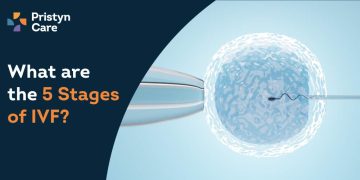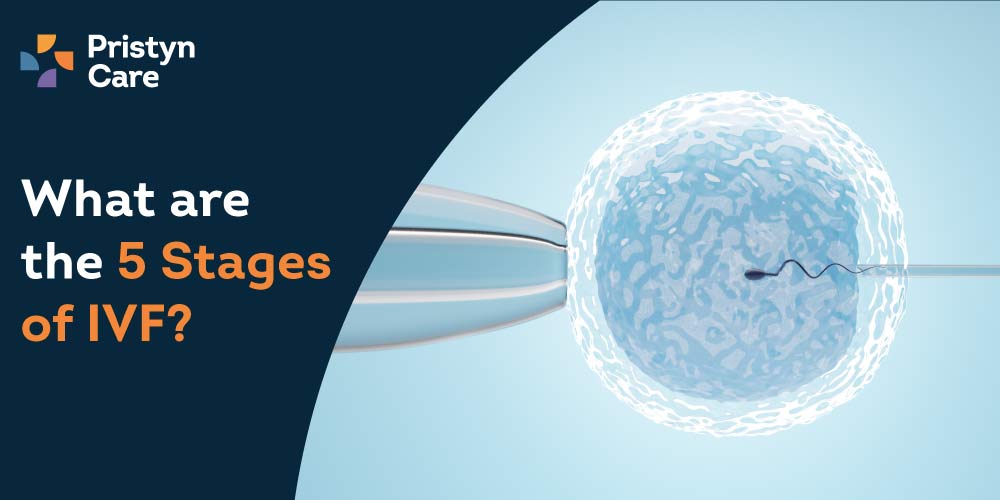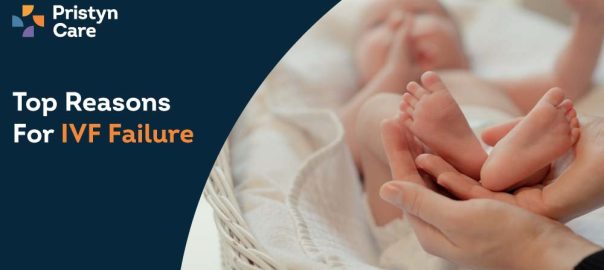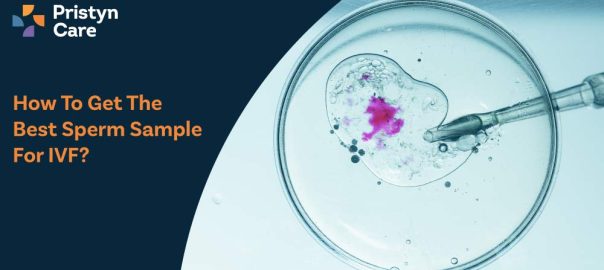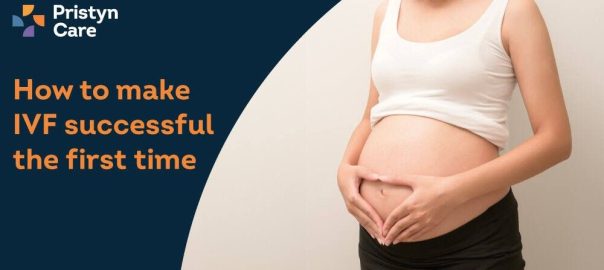![]() Views: 101
Views: 101
What are the 5 Stages of IVF?
Contact us to learn more about how our IVF treatments can help you achieve your dream of parenthood, and take your first step towards bringing new life into your world.
Dedicated Support at Every Step!
Our Doctors are available 24 hours a day, 7 days a week to help you!
Call Us0806-541-7961In vitro fertilization (IVF) represents a beacon of hope for countless individuals and couples yearning to build their families. As one of the most effective forms of assisted reproductive technology, IVF involves a series of well-defined steps, each crucial for enhancing the chances of success. But how exactly does this process unfold?
In this guide, we will help you understand the IVF journey by breaking down its five essential stages and providing clarity on what to expect at each phase.
Additionally, we’ll address a fundamental question - Who is an ideal candidate for IVF? We will equip you with the knowledge and confidence to navigate the complexities of IVF, whether you're contemplating its possibilities or are ready to embark on this hopeful journey.
Table of Contents
What Happens in IVF?
In Vitro Fertilisation (IVF) is a fertility treatment where eggs are fertilized by sperm outside the body. The process begins with hormone therapy to stimulate the ovaries to produce multiple eggs. Once mature, the eggs are retrieved from the ovaries using a minor surgical procedure. These eggs are then exposed to sperm in a laboratory setting to encourage fertilization.
Fertilized eggs, now embryos, are monitored for growth and quality over the next few days. The most viable embryos are then selected for transfer into the uterus, where they may implant and develop into a pregnancy.
This entire cycle can take about three weeks but may vary depending on the specific circumstances and procedures used, such as embryo freezing or genetic testing. IVF is known for its ability to help those with fertility issues conceive, offering hope to many who have struggled with achieving a successful pregnancy naturally.
No Cost EMI, Hassle-free Insurance Approval
MBBS, MS-Obs & Gynae | Chief Consultant – IVF & Fertility Sciences
₹2400₹1200Consultation Fee
MBBS, MS-Obs&Gynae, Fellowship N.B. (Reproductive Medicine)
₹2400₹1200Consultation Fee
MBBS, MS - Obstetrics & Gynaecology, DNB, MRCOG (Part 1) FIRM
₹1000₹500Consultation Fee
Stages of IVF
In Vitro Fertilisation (IVF) is a meticulously structured treatment that offers hope and a solution to couples facing infertility. This process is broken down into five critical stages, each of which plays a vital role in the journey towards achieving a successful pregnancy.
Understanding each stage in depth can provide prospective patients with insights into what to expect and how best to prepare for each phase of the treatment.
Stage 1: Ovarian Stimulation
The first stage of IVF involves stimulating the ovaries to produce multiple eggs, rather than the single egg typically released during natural ovulation. This is achieved through the administration of synthetic hormones, such as follicle-stimulating hormone (FSH) and luteinizing hormone (LH). The process begins with a woman undergoing a series of daily injections, which may last between 8 to 14 days.
During this time, the woman's response to the medication is closely monitored through blood tests and ultrasound scans. These tests measure hormone levels and check the development of ovarian follicles, respectively.
The goal is to produce a healthy number of mature eggs, optimising the chances for fertilisation while carefully managing the risk of Ovarian Hyperstimulation Syndrome (OHSS), a potential side effect of fertility drugs.
Stage 2: Egg Retrieval
Approximately 36 hours after the final hormone injection, known as the trigger shot, egg retrieval is scheduled. This procedure is performed under sedation to ensure comfort. Using ultrasound guidance, a fine needle is inserted through the vaginal wall and into the ovaries to aspirate the eggs directly from the follicles.
The process is delicate and requires precision to ensure the maximum number of viable eggs are collected without causing significant discomfort or complications.
Stage 3: Fertilisation
Following retrieval, the eggs are taken to a laboratory where they are assessed for quality and prepared for fertilisation. Fertilisation can be achieved through conventional insemination, where sperm and eggs are mixed together in a petri dish, or through Intracytoplasmic Sperm Injection (ICSI), where a single sperm is injected directly into each egg. ICSI is particularly useful in cases of male infertility, where sperm count or motility may be an issue.
The eggs are monitored over the next 18 to 24 hours to confirm that fertilisation has occurred and that cell division is proceeding normally. This stage is critical as it determines the potential development of viable embryos for transfer.
Stage 4: Embryo Culture and Development
Once fertilisation is confirmed, the embryos are cultured in the lab for several days, typically between three to five, depending on the individual protocol and the quality of the embryos. During this period, embryologists monitor the embryos to assess their growth and select the most viable for transfer.
Advanced techniques, such as preimplantation genetic testing (PGT), may be employed to detect any genetic abnormalities and select the healthiest embryos, enhancing the likelihood of a successful pregnancy.
Stage 5: Embryo Transfer
The final stage involves transferring the selected embryos into the woman's uterus. This procedure is typically minimal pain and does not require sedation. A thin catheter is used to pass the embryos through the cervix and into the uterus, where they will ideally implant into the uterine lining and develop into a healthy pregnancy.
The number of embryos transferred varies based on the patient's age, reproductive history, and specific circumstances, with a trend towards single embryo transfer to reduce the risk of multiple pregnancies.
Following the transfer, the patient may need to continue hormone therapy to support the uterine lining and enhance the chances of implantation. Approximately two weeks after the transfer, a blood test is conducted to check for the presence of human chorionic gonadotropin (hCG), the hormone produced during pregnancy. This test will determine if the IVF cycle has been successful.
The stages of IVF represent a complex but highly structured process designed to overcome various forms of infertility. Each stage is critical and requires careful coordination and monitoring by a team of fertility specialists.
For many couples, IVF provides a viable path to parenthood, one that involves advanced medical techniques and a deep commitment to the goal of bringing new life into the world. Understanding these stages helps couples prepare mentally and emotionally for what to expect, contributing to a smoother, more informed journey through IVF.
Who can Undergo IVF?
IVF is a versatile treatment that can assist a wide range of individuals and couples in their journey toward parenthood. It is particularly beneficial for those who have not had success with other fertility treatments or who face specific medical conditions that affect fertility.
Couples with Infertility Issues
Women with blocked or damaged fallopian tubes and IVF are particularly beneficial as it bypasses the tubes entirely. It's also a solution for men with low sperm count or sperm motility issues. Couples with unexplained infertility, where no specific cause has been identified despite thorough investigations, often turn to IVF as a hopeful option.
Age-Related Infertility
As fertility naturally declines with age, older women may opt for IVF, especially those over 35 seeking to conceive. IVF can be used with donor eggs, which significantly increases the chances of pregnancy in older women.
Genetic Concerns
Couples with a risk of passing on genetic disorders can use IVF in conjunction with PGT (preimplantation genetic testing) to ensure embryos are free from known genetic conditions before implantation, providing a path to a healthy pregnancy.
Single Individuals and Same-Sex Couples
IVF offers an opportunity for single individuals and same-sex couples to have biological children. This can involve donor sperm or eggs and, in some cases, gestational carriers, expanding family-building options to a wider community.
Health and Lifestyle Considerations
Individuals with certain health conditions, such as polycystic ovary syndrome (PCOS) or endometriosis, might choose IVF after other treatments fail. Lifestyle factors, including significant weight fluctuations or advanced maternal age, can also influence the decision to undergo IVF.
Psychological and Emotional Considerations
Undergoing IVF can be emotionally and physically demanding. Prospective patients are typically counselled about the potential for multiple cycles and the emotional resilience required. Support systems, such as counselling and support groups, play a crucial role in the IVF process, helping individuals and couples cope with potential ups and downs.
By addressing a broad spectrum of fertility challenges, IVF provides a tailored approach that enhances the chances of conception, offering hope and a potential path to parenthood for many facing fertility barriers.
Navigating the IVF journey can be both challenging and hopeful. With a clear understanding of its five meticulously structured stages—from ovarian stimulation to embryo transfer—prospective patients are better prepared to embark on this transformative path. Each step in the IVF process is designed to optimise the chances of a successful pregnancy, providing vital support to those dreaming of building their families.



